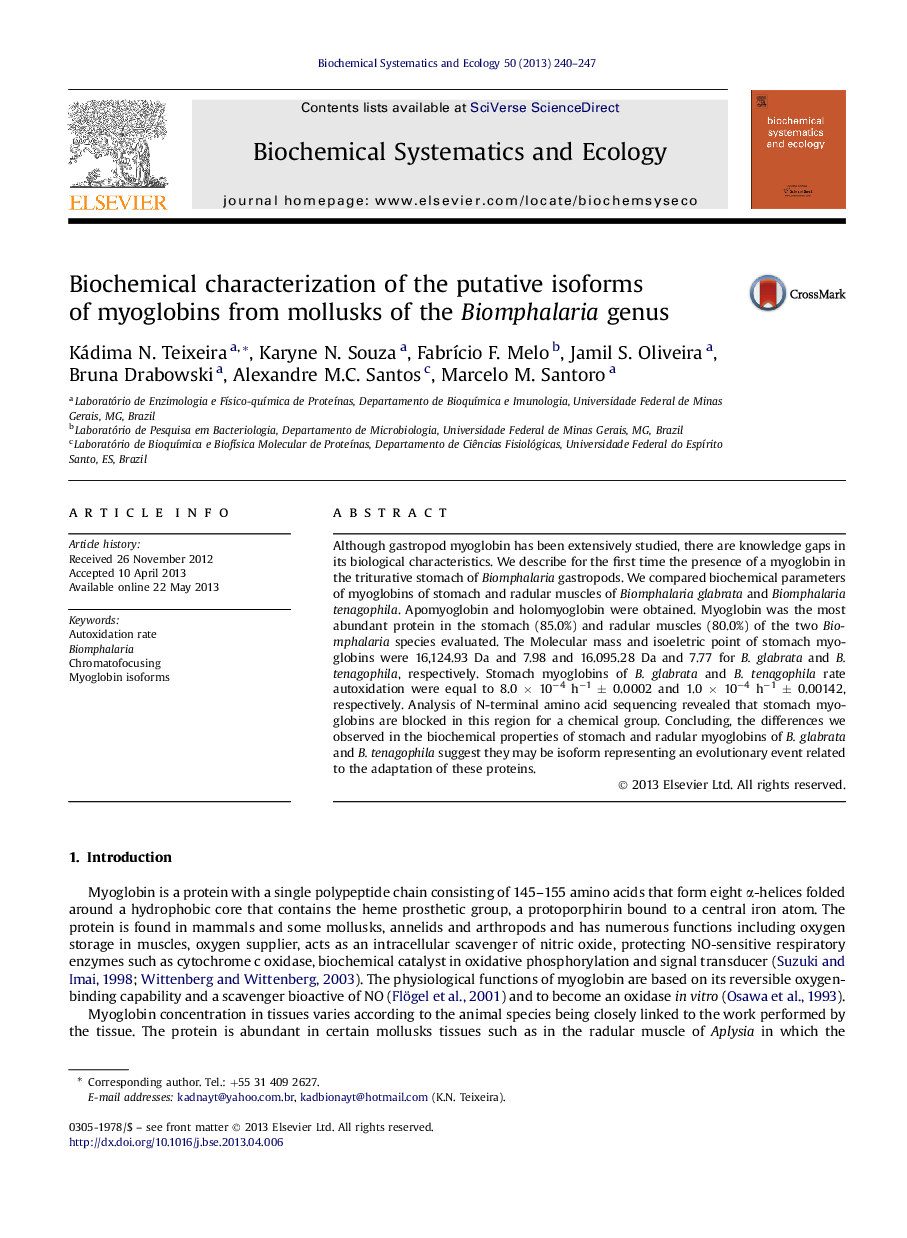| Article ID | Journal | Published Year | Pages | File Type |
|---|---|---|---|---|
| 7769319 | Biochemical Systematics and Ecology | 2013 | 8 Pages |
Abstract
Although gastropod myoglobin has been extensively studied, there are knowledge gaps in its biological characteristics. We describe for the first time the presence of a myoglobin in the triturative stomach of Biomphalaria gastropods. We compared biochemical parameters of myoglobins of stomach and radular muscles of Biomphalaria glabrata and Biomphalaria tenagophila. Apomyoglobin and holomyoglobin were obtained. Myoglobin was the most abundant protein in the stomach (85.0%) and radular muscles (80.0%) of the two Biomphalaria species evaluated. The Molecular mass and isoeletric point of stomach myoglobins were 16,124.93 Da and 7.98 and 16.095.28 Da and 7.77 for B. glabrata and B. tenagophila, respectively. Stomach myoglobins of B. glabrata and B. tenagophila rate autoxidation were equal to 8.0 Ã 10â4 hâ1 ± 0.0002 and 1.0 Ã 10â4 hâ1 ± 0.00142, respectively. Analysis of N-terminal amino acid sequencing revealed that stomach myoglobins are blocked in this region for a chemical group. Concluding, the differences we observed in the biochemical properties of stomach and radular myoglobins of B. glabrata and B. tenagophila suggest they may be isoform representing an evolutionary event related to the adaptation of these proteins.
Keywords
Related Topics
Physical Sciences and Engineering
Chemistry
Organic Chemistry
Authors
Kádima N. Teixeira, Karyne N. Souza, FabrÃcio F. Melo, Jamil S. Oliveira, Bruna Drabowski, Alexandre M.C. Santos, Marcelo M. Santoro,
